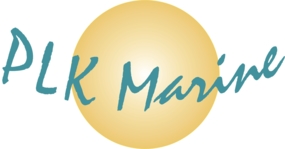Action 1 : FAD Technology
Organizer : Paul Gervain (paul.gervain@wanadoo.fr)
Picture Library : Dominica // Guadeloupe // Haïti // Martinique // St Kitts and Nevis // St Vincent and the Grenadines
Motivation and objectives
Experience acquired on FADs in the Caribbean have made it possible to pinpoint their weak points vis-à-vis their conformity with navigation security or sub-marine equipment regulations and the requirements of professional fishermen. The points on which improvements are to be made concern :
- The reliability of night-time and daytime beacons for FADs. They should be more visible for cargo ships.
- The resistance of ropes along the first two hundred metres from the surface. The most frequent causes of ropes breaking are fishing lines and, generally, all forms of abrasion for which adequate protection has not yet been found.
- The insubmersibility of FADs in the strongest currents. Computational software has been perfected to study the behaviour of FADs according to their characteristics, but lack of knowledge about regional currents imposes an experimental phase for testing these devices in real conditions.
Identifying new material and testing it in FAD exploitation conditions must enable recommendations to be made about the design and construction of FADs and about maintenance schemes to be implemented in order to ensure their reliability and conformity with the regulations. Estimating the average FAD’s duration, costs and maintenance is an essential forecast management element in FADS fleet.
Material and methods
As a result of the last meeting of the FAD’s working group, a new design was proposed based on the recommandations.
To ensure a greater visibility of the FAD and reliability of the daylight and nigh time beaconing equipment, the head consists of a single of large volume unsinkable buoy. On this buoy, called “PLK600”, a radar reflectors and a solar fire that do not require maintenance are attached. The first 300 m of rope are mix material in order to resist cuts by fishing lines.
However, the cost of this device is higher than the previous ones. 2 types of FADs are therefore suggested for testing, one fitted with a PLK600 buoy and the other one equipped with a chain of buoys and a mix material rope.
The experimental FADs will be monitored regularly, in order to note all the incidents liable to affect their lifetime, the quality of the beaconing, etc. The fishermen’s opinion on the devices will be also reported. An electronic beacon will be used for remote Internet location of the devices equipped with a PLK600 buoy.
Implementation
One or several FADs will be installed per island in order to share the monitoring and maintenance work between different teams and to enable recommendations shared by all to be given from a common base of observations made using the same protocol. These FADs will be installed at a distance from the coast (depth) discussed beforehand with the partners to the project, in the zone chosen for the biological and economic monitoring. They should enable fishermen in the zone to have at least one FAD at their disposal continuously during the whole project. The material necessary to construct the FADs will be bought and delivered on Guadeloupe. The new improved designed FAD will be built in Guadeloupe. FADs will be deployed using a special boat from Guadeloupe.
Each participating country will be responsible for the maintenance of the FADs after deployment.
The same FAD design will be used on all the islands: this plan is that of a well-tried device whose lifespan is longer than the project duration. The material and constructions to be tested will be reproduced on several FADs so as to be able to establish statistics about the results obtained. The FADs will be monitored thanks to information provided by the fishermen during their daily reports (see biological section) and also by visiting the FADs. For each visit or new information on the FAD, a “Data collection sheet on FAD” will be filled in by the data collector.
Participants
Ifremer (Martinique)
- Coordination of collecting and processing the data throughout the islands.
- Monitoring the FADs launched in Martinique and collecting the data for Martinique.
- Participation in the synthesis work.
CRPMEM de Martinique et Guadeloupe
- Participation in the synthesis work.
Pays de la Caraïbe
- Organizing meetings for the FAD’s setting-up.
- Monitoring and maintaining the experimental FADs.
- Collecting and processing the data.
- Participation in the synthesis work.
Work schedule
- Months 1 to 4 : buying the material.
- Months 2 to 6 : constructing and launching the FADs.
- Month 3 to 6 : FADs deployed first in Dominica, followed by the other countries as soon as they are ready.
- Months 9 to 23 : website will be established and information on the FADs will be posted.
- Months 19 to 22 : follow up, technical assistance as necessary.
Meetings with the partners of the project will be held :
- After deployment of FADs, training on monitoring, maintenance, collection of catches and effort data and determination on quality of fish landed will conducted.
- Month 7: defining the protocols for monitoring the FADs during daily reports and visits for maintaining the devices.
- Month 18: presentation of the state of progress of the work and first results obtained. Proposal and discussion of a first list of recommendations to make at the outcome of the project.
- Month 23 : synthesis of the work and recommendations to be made at the outcome of the project.
Work in progress
Downloads
- Working documents
- Bibliography



